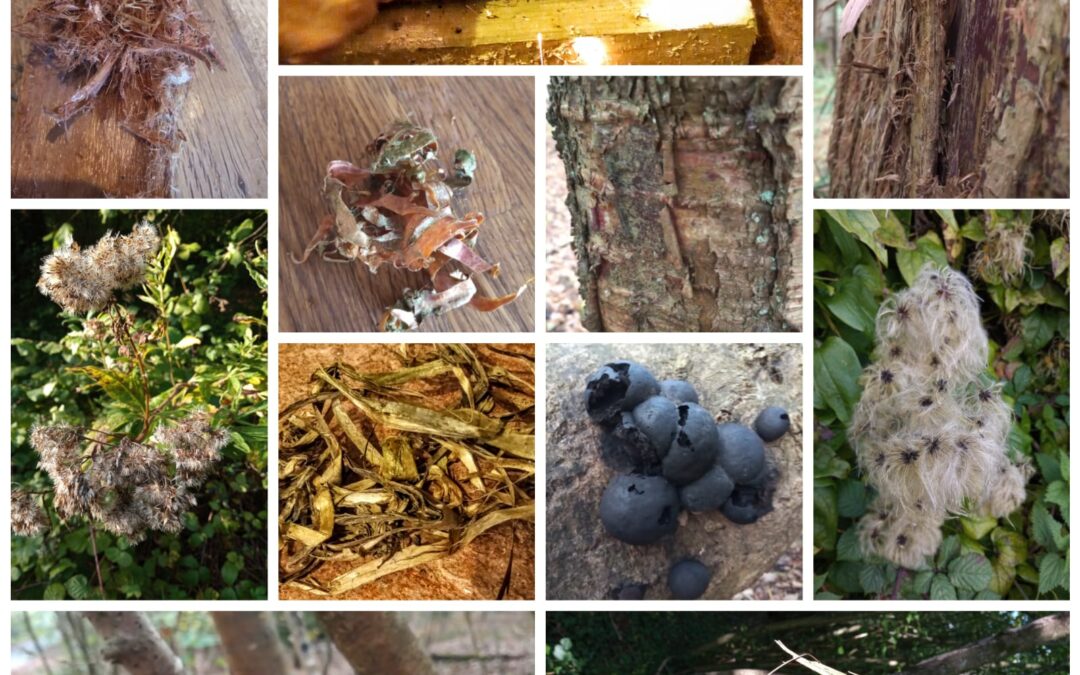By Nicky Hedgecock.
Autumn and early winter is a great time for collecting your natural tinders while you are out foraging nature’s bounty. It is very quick and easy to light your fire or stove with a match and firelighter and, at times, the best way to go, but it is also very satisfying getting your fire going with a more natural, environmentally friendly method.
Here, I am going to cover just a handful of natural tinders that you can collect, prepare and light with a spark from your firesteel.
King Alfred’s Cakes, or Cramp Ball, is a round, black/brown fungus that grows on, predominantly, dead Ash trees. They grow dark burgundy/brown but when they turn black and sound hollow when you flick them, they can be taken off the dead tree. Inside they look very much like charcoal and have concentric circles, thus their Latin name Daldinia Concentrica.
If you get your sparks to land on the open surface of the Cramp Ball, the part that was attached to the tree, it will ember away quite happily until it is all burnt out. This can take quite some time, especially if you find a large Cramp Ball. While embering, place in a bundle of straw or other dried grass and, with a blow of breath, it will ignite the straw and you can build your fire from that.
Clematis and Honeysuckle bark will also take a spark but won’t just ember, they will create a flame. Both plants are climbers, Clematis preferring the alkaline, chalky soil and Honeysuckle preferring the more acid, ericaceous soils. Only take the bark that the plant readily gives up, don’t strip the stems. It will feel quite thick and woody but if you take a bundle and spend time buffing it up between your hands, it will create a lovely fibrous bundle which will ignite with a few sparks from your firesteel.
The same process can be used with the inner bark of Western Red Cedar, I love the beautiful aroma of these tress. Again, just collect what is offered up readily, you shouldn’t have to pull the bark from the tree. Once you are ready to light your fire, simply use the striker part of your firesteel to scrape the inner bark, the side that was facing the tree, back and forth until it builds into a fibrous ball which will then take a spark. The added benefit of this method is that you have the outer bark intact which will act as kindling, along with other thin sticks, as your flame grows.
The last two I will mention today are seed heads. Clematis has the bonus of its bark and seed heads that can be used for fire lighting. It has a common name of Old Man’s Beard and you can see why when you come across great swathes of Clematis seed good for collection. It can usually be picked off just using your fingers.
Also, Hemp Agrimony offers prolific sprays of tiny, fluffy seed heads and with both it is easy to collect a bagful in no time at all. These two will take a spark but the flame will flash over the seed very quickly so you would need to accompany it with some of the tinders previously mentioned in this blog to get a good burning flame.
All of these methods need to be completely dry to work but that’s not to say you can’t collect them damp and dry them off at home for a few days.
Well, I think this is a good start but there are many, many more tinders you can use and half of the fun is collecting bits and pieces and just giving it a go. Good luck and stay warm!

